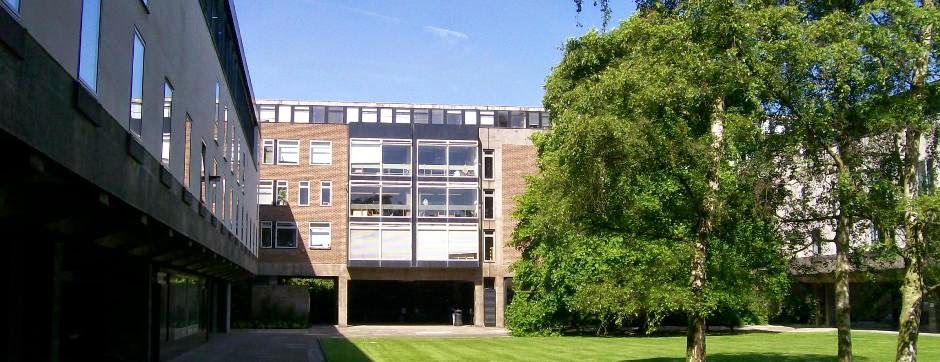Amongst the varied and extensive material contained within the Austin Robinson archives held by the Marshall Library there is an unassuming brown marbled folder containing 112 typewritten foolscap pages. This is the draft report produced by Austin in 1928 at the behest of the Indian States and which was incorporated into "The British Crown and the Indian States" published in 1929. It is significant in that it not only represents Austin's first involvement in the practical problems of development economics but also provides an early example of his belief in the importance of quantifying economic arguments.
 |
| Folder containing Austin's typescript draft notes on the economic relationships between Indian States and British India (Austin Robinson Papers 7/1/10) |
It is perhaps not surprising that Austin should be drawn to development economics and the idea that economics should, ideally, be about improving the state of the world. After leaving the Royal Naval Air Service he returned to Cambridge as an undergraduate and, in the long vacation of 1920, found himself participating in the Liverpool University Settlement which undertook to help poor dockers living in the slums of Merseyside. As a result of this experience he gained some understanding of the problems facing the less fortunate elements of society. Moreover Austin was fortunate to be taught by Keynes, Pigou, Fay and Shove at a time when there was general consensus amongst Cambridge economists that economics should not be studied for itself but for the benefits it could bring.
It was not, however, until Austin had the opportunity to live in India that he was presented with the opportunity to use his economic ideas to promote development. In 1923 he was made a fellow of Corpus and, in 1926, married Joan Maurice. Shortly afterwards, and as a result of his College connections, Austin was offered the job of tutor to the ten-year-old Maharaja Jivajiro Scindia in Gwalior, a semi-sovereign princely state in India.
 | ||
| Official photograph of the ten year old Maharajah of Gwalior, dated 19/11/1928 (Austin Robinson Papers 12/1/14) |
Austin and Joan arrived in Gwalior in October 1926 and received accommodation in an enormous mansion close to the Maharajah's palace. Although Austin's primary concern was the education of the young Mararajah it was during his time in Gwalior that he became interested in the financial relations between the Princely States and the Government of India and, through this, the problems confronting developing regions generally.
 |
The mansion in which Austin and Joan lived during their stay in Gwalior (Austin Robinson Papers 12/1/2)
Austin's Indian sojourn coincided with the arrival of an official committee under Sir Harcourt Butler which had been appointed to report on a range of issues regarding the governance of India.
Having had the opportunity to meet several of the representatives of the Princely States - notably Pandit Narian Haksar - socially at the Palace of Gwalior, Austin has been made aware of many of the economic and fiscal issues that concerned the states in their dealings with the Government of India. He also met members of the Butler Committee and became concerned that they didn't fully appreciate the significance of the issues as explained to him by Haksar - Butler, in particular, he considered to be "terribly lazy and self-satisfied".
|
 |
Table of contents to Austin's memorandum - Click here for larger image (Austin Robinson Papers 7/1/10) Austin's preface to the memorandum showing some of Joan's amendments - Click here for larger image (Austin Robinson Papers 7/1/10)
Austin argued that, because the Princely States were relatively underdeveloped compared to those areas administered directly by the Government of India, it was essential to review the fiscal burdens and obligations imposed on the States to ensure that they were fair and just and to release capital which could then be used to promote development. To this end he sought to quantify the benefits and burdens arising out of the State's relations with the Indian Government. Although this was difficult due to the paucity of accurate data available he considered it vital if the claims and arguments of the States were not to be dismissed out of hand by the Butler Committee.
This memorandum is significant as it represents Austin's first work in economics to appear in print - although, of course, it was eventually much revised and re-written and was never actually attributed to him in the final published version which appeared in 1929. It is also significant in that it represents his first foray into the practicalities of economic development and, as such, has been described by Geoff harcourt (2006, p.521) as '... a first-class piece of applied political economy'.*1
*1 Harcourt, G.C. (2006) 'Robinson, (Edward) Austin (Gossage) (1897-1993)', in Clark, D.A. (ed.) The Elgar companion to development studies. Cheltenham: Edward Elgar, pp. 520-525. |






















